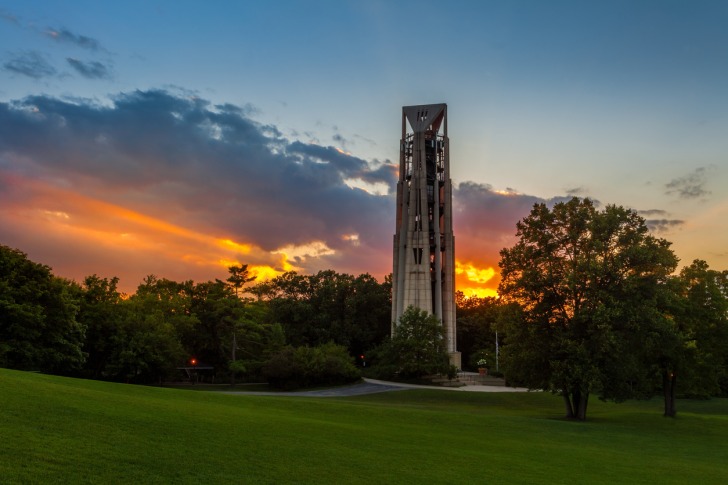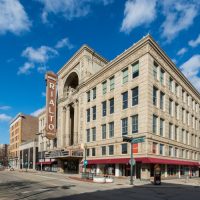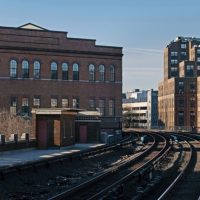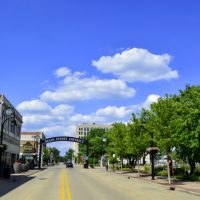The city of Naperville, Illinois is one of Chicago‘s most famous western suburbs.
Naperville is well known for its record-breaking schools, top-notch amenities, and local events.
This guide talks about some of the pros and cons of living in Naperville.
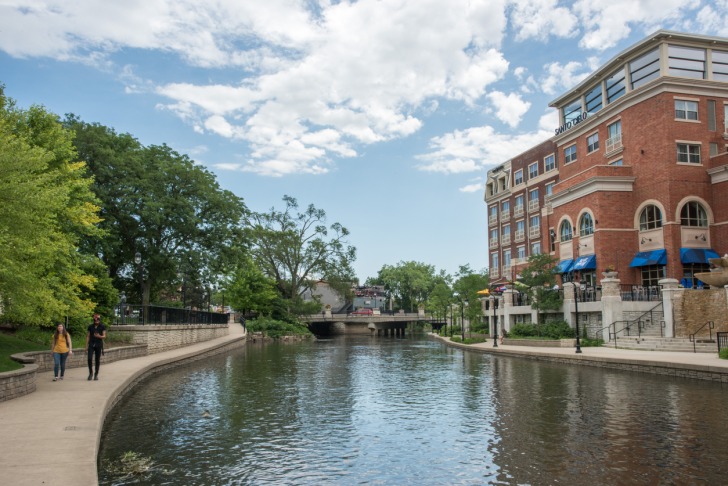
Contents
Pros of Living in Naperville, IL
1. Top-Notch Public and Private Schools
Many Naperville residents with families and children choose to live in the area for access to some of the state’s best schools.
The city of Naperville is home to the Naperville Community Unit School District 203 and The Indian Prairie School District 204.
Both districts are known for their strong commitment to educational excellence and rank among the top school districts in the state and the nation.
CUSD 203 schools are known for providing students with access to a host of extracurricular activities, including sports and swimming clubs where local area students thrive.
2. The Crime Rate Is Low
The city of Naperville is considered relatively safe when compared with other Chicago suburbs and major metropolitan areas in the US.
The property crime rate is higher than the violent crime rate, which averages out to about one violent incident per 1,000 area residents.
3. Historic Downtown and Shopping
Downtown visitors enjoy having access to popular boutiques, restaurants, and time-tested businesses that have been operating in the city for decades.
The cobblestone streets and vintage street lamps add to the area’s nostalgic ambiance, which is often festively decorated to celebrate the latest holidays and seasonal events, drawing tourists from miles around.
4. Community Events
The suburban city of Naperville is known for hosting numerous community events that draw crowds who enjoy cultural, recreational, and celebratory activities.
Residents love walking, biking, and riding through the downtown and Riverwalk areas when the city is festively lit and providing free and paid entertainment for excited visitors.
Naperville hosts several annual community events that include some of the following:
- Naperville Ribfest
- Naperville Wine Festival
- The Naperville Independent Film Festival
- Downtown Naperville Santa House
5. Proximity to the City of Chicago
Naperville residents can reach downtown Chicago in about an hour with good traffic, or they can take public transportation options and use the local Metra trains that drop west suburban residents off at Chicagos Historical Union Station within about forty-five minutes.
Adventure-seeking residents can hop on a train to take advantage of shopping along Chicago’s magnificent mile and indulging in some of the area’s fine dining and popular restaurants that draw crowds and visitors from across the world.
6. Variety of Shopping Venues
The Fox Valley Mall features a wealth of high-end retailers and family favorites like Macy’s and JCPenney.
Naperville’s homeowners also have access to big box retail stores like Target, Walmart, Home Depot, and Costco, which makes it easier to take care of their everyday needs.
The city also features several widespread grocery store gains, including Jewel Osco and Whole Foods.
7. Excellent Quality of Life
Living in proximity to top-notch schools, restaurants, and shopping venues with easy access to the city of Chicago means that plenty of Naperville residents enjoy an above-average quality of life in this quiet and out-of-the-way Western Suburb.
The city is consistently ranked as one of the best places to live in Chicago, Illinois, and the United States.
Happy residents say the area’s natural beauty, healthcare systems, widespread availability of local recreation and parks, and sense of safety make them feel proud to call Naperville home.
8. Prestigious Reputation
Living in Naperville comes with a prestigious reputation as the city is well known as a sought-after destination by residents of neighboring suburbs and other Chicago area cities.
Naperville’s reputation for excellence in areas of academics, safety, employment, transportation, and recreation makes it one of the most sought-after and ideal locations for people seeking a quiet, serene, and luxurious living environment on the outskirts of Windy City.
Cons of Living in Naperville, GA
1. Traffic Congestion
While many residents love living in Naperville for its prestigious reputation and access to good schools, others struggle with the effects of high traffic congestion in the area.
The main thoroughfare of the city bypasses many of the area’s local shopping venues and restaurants.
These high-traffic areas can leave this small Illinois town in traffic gridlock for hours on end when regular traffic patterns collide with rush hour, placing hundreds of local residents bumper-to-bumper on the main roads.
2. Harsh Winters
Naperville’s proximity to the Windy City, downtown Chicago, and lake effect snow can leave residents exposed to frigid temperatures and mountainous snow drifts during the winter season.
Low temperatures, high snow drifts, and gridlocked traffic can mean miserable winters spent shoveling snow, digging out cars, and waiting for hours in traffic as they inch slowly along snowy and ice-covered roads.
Harsh winters in the area that cause extremely low temperatures can also lead to higher heating and natural costs as Naperville area residents crank up thermostats to stay warm in their chilly homes.
3. High Cost of Living
While living in the city limits of Naperville definitely comes with lots of perks, the cost of living can be extremely high.
Online reports from Payscale show residents living in Naperville pay more than 40% above the average cost of living in the US.
They report the average home price in Naperville at over a million dollars, which means that housing costs are almost 150% above the national average.
Residents of the city reportedly pay 25% more for transportation-related prices than other US cities and 5% more than people in most other US cities for groceries.
4. Highly Competitive Real Estate Market
With the average home price in the city coming in at just over a million dollars, competition for affordable housing in the area can be fierce.
Rental homes and apartments in the area can go for as much as $3,000.00 per month, making living in the area impossible for some new homebuyers and prospective residents thinking of relocating to this suburban city.
5. Property Taxes
With sky-high prices for homes, transportation, and groceries, it comes as no surprise that Naperville is reported to pay some of the highest property taxes in the US.
The national average cost for US property taxes falls right around $2,500.00 per year.
In contrast, Naperville’s taxes average around $7,000.00 per year.
High levels of services, excellent school districts, parks and recreation facilities, and a well-maintained infrastructure are just a few of the factors contributing to the extremely high property taxes in this sought-after suburb.
6. Suburban Sprawl and Traffic
While many Chicagoland residents dream of moving their families to Naperville to enjoy the best of what the city has to offer, others shrink from the idea because of high prices, extreme traffic congestion, and sprawl.
Residents and visitors can have an extremely difficult time getting around this Western Suburb known for its bumper-to-bumper traffic during rush hour and holidays.
Many visitors and residents find the increased travel time to be stressful and frustrating and try to avoid driving in the area at all costs.
7. Lack of Diversity
The city of Naperville encompasses a suburban population that is around 65% white, 20% Asian, 6.5% Hispanic or Latino, and 4.3% black.
The lack of diversity in the area can make it difficult for low-income and minority residents to feel at home in the city, which says it is working on addressing the issues and encouraging equal opportunities for all.
High costs of living and similar factors contribute to the lack of diversity in the area, as many Chicagoland residents simply cannot afford to maintain mortgages, rents, and the high costs of services in Naperville.
8. Limited Public Transportation
While Naperville is home to the Metra public transit train system that carries residents and visitors to nearby suburbs and downtown Chicago, other public transportation options are minimal.
There are two Metra stops in the city, with one at 4th Avenue and the other at Route 59.
Public transportation riders can catch the Pace bus once they reach one of these destinations to navigate their way through to other locations in the city.
Pace offers limited bus service with increments between buses that can be as much as an hour.
There is no local bus service on Sunday, making it almost impossible for people without cars to get around the city.
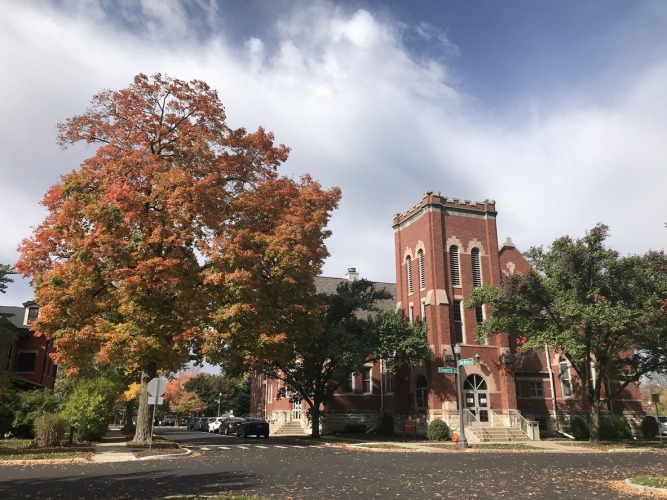
Pros and Cons of Living in Naperville, IL – Summary Table
| Pros of Living in Naperville, IL | Cons of Living in Naperville, GA |
|---|---|
| 1. Top-Notch Public and Private Schools | 1. Traffic Congestion |
| 2. The Crime Rate Is Low | 2. Harsh Winters |
| 3. Historic Downtown and Shopping | 3. High Cost of Living |
| 4. Community Events | 4. Highly Competitive Real Estate Market |
| 5. Proximity to the City of Chicago | 5. Property Taxes |
| 6. Variety of Shopping Venues | 6. Suburban Sprawl and Traffic |
| 7. Excellent Quality of Life | 7. Lack of Diversity |
| 8. Prestigious Reputation | 8. Limited Public Transportation |
Naperville Safety Overview
READ THE FULL REPORT: Naperville Safety Review
Safety Index:
- OVERALL RISK: LOW
- TRANSPORT & TAXIS RISK: LOW
- PICKPOCKETS RISK: LOW
- NATURAL DISASTERS RISK: LOW
- MUGGING RISK: LOW
- TERRORISM RISK: MEDIUM
- SCAMS RISK: MEDIUM
- WOMEN TRAVELERS RISK: LOW
Frequently Asked Questions
What are the main advantages of living in Naperville?
Living in Naperville comes with a variety of advantages that include access to some of the best schools and housing options in the United States.
Naperville’s area residents have the best of both worlds as this Western Chicago suburb offers peace and tranquility with easy access to Downtown Chicago.
What are the potential downsides of living in Naperville?
The biggest downside of living in the city of Naperville is its high cost of living, increased property taxes, lack of public transportation options, and lack of diversity.
What is the school system like in Naperville?
The city of Naperville is home to two of the most sought-after school districts in the country.
Naperville’s District 203 and 204 are part of the driving factors that attract families with children to the area where they eventually become long-term residents.
How does the cost of living in Naperville compare to other West Chicago suburbs?
The cost of living in Naperville is almost twice that of the national average.
It is notably higher than the costs of living in other nearby suburbs, including Aurora, Bolingbrook, Lisle, Lombard, and Wheaton.
Is Naperville a safe place to live?
Online reports from websites like Neighborhood Scout show that Naperville is one of the safest places to live in Illinois and the US.
They report a crime index score of 83 out of a possible 100, which is the safest score possible.
The city has lower rates of violent crimes than crimes against property.
As such, only 1 in every 1,639 people are reported to be victims of violent crime, and 1 in every 313 people are reported to experience property crimes like burglary, robbery, and theft of personal property.
